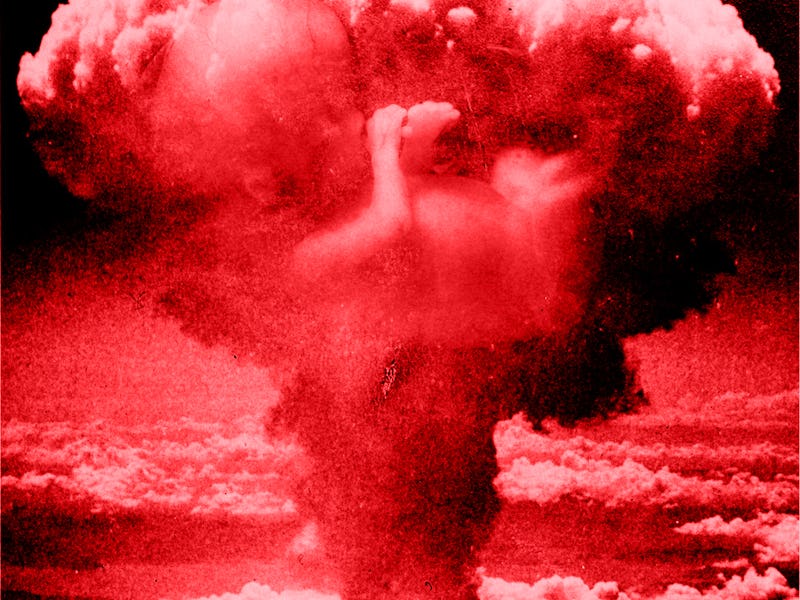How Does the "Mother of All Bombs" Compare to a Nuclear Bomb?
The MOAB is scary, but it can get a lot worse.

The United States Air Force has dropped the “mother of all bombs” on Afghanistan on Thursday around 7:32 p.m. local time. It was the first time this 21,600-pound bomb — technically known as a GBU-43/B Massive Ordnance Air Blast Bomb, or MOAB — has been used.
While incredibly destructive, the MOAB, hailed as America’s most powerful non-nuclear weapon, doesn’t hold a candle to the atomic bombs dropped on Hiroshima and Nagasaki.
The MOAB, which contains over 8,000 pounds of an Australian explosive called H6 that’s typically used underwater, is powerful: It has an explosion equivalent to 11 tons of TNT. In comparison, “Little Boy,” the uranium atomic bomb that the U.S. military dropped on Hiroshima in August 1945, had the explosive power of about 16 kilotons — or 16,000 tons — of TNT. “Fat Man,” the bomb dropped on Nagasaki three days later, had an explosiveness of about 20,000 tons (or 20 kilotons). Units are key here; the level of damage caused by the MOAB versus nuclear weapons differs by a factor of 1,000.
Curiously, however, the blast radius — that’s the distance from the point where the bomb is dropped — is comparable. MOAB’s blast radius is estimated to be about 1 mile, which is the same as the radius measured for the bomb dropped on Hiroshima and Nagasaki.
Conventional bombs are weaker than nukes because they derive their destructive force solely from the explosiveness of the chemicals inside it; in other words, its core reaction is a chemical one. Nuclear bombs, in contrast, release nuclear radiation and heat via a nuclear reaction, which releases an exponentially larger amount of energy. Think back to high school chemistry: A chemical reaction, which involves breaking the bonds between atoms, messes only with the electrons orbiting the atom’s nucleus. A nuclear reaction, on the other hand, requires splitting the neutrons and protons at the atom’s much more tightly bound core. According to the estimate of Nuclear Darkness, a single, small nuclear bomb releases as much energy as about 40,000 conventional bombs.
Splitting protons and neutrons releases way more energy than picking off electrons.
Nuclear bombs are, of course, ultimately more dangerous than non-nuclear bombs because of the fallout that ensues. Conventional bombs wreak havoc by blasting everything within their radius, but their effects don’t linger much longer afterward; the radiation from nuclear weapons, on the other hand, sticks around for a long time and sickens people for years hence in various ways — that’s why the majority of Hiroshima’s and Nagasaki’s deaths occurred well after the atomic bombs were dropped.
There are many metrics we can use to evaluate the potential damage caused by a bomb, and not all of them are readily measurable. The MOAB was originally designed to inflict psychological damage — that is, to scare forces into surrendering rather than to kill them outright. How MOAB compares in psychological impact to World War II’s atomic bombs remains to be seen.
That said, these days neither MOAB, the “father of all bombs,” or atomic bombs are the biggest threat to global security — that sordid distinction goes to modern atomic weapons known as thermonuclear weapons. The B83, a bomb that uses the fission process, releases a blast equivalent to 1,200,000 tons of TNT, making it 80 times more powerful than Little Boy and about 109,000 times stronger than the MOAB.